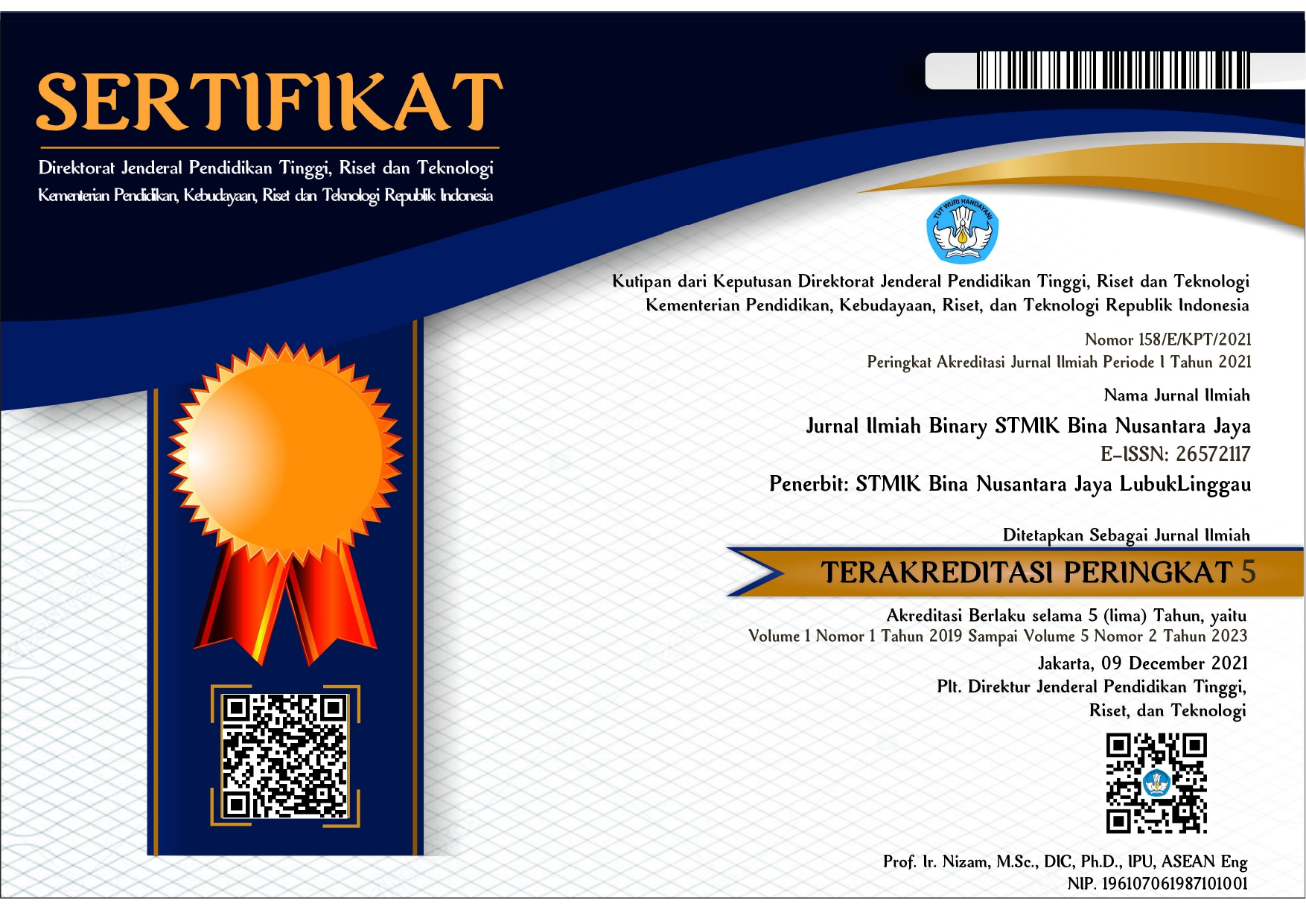Penerapan Algoritma K-Means Dalam Segmentasi Pelanggan Pada Toko Sembako Menggunakan Rapidminer
Abstract
The change in business paradigm has lead business owners to adjust the concept in managing their business. This is a response to the conditions that occur and increasing business competitions. Business concepts that were previously based on products, today have changed not only in the product, but also in the user of the product or customer. This research focuses on discussion related to how customer grouping makes it easier to create a marketing policy. The method used is the k-means algorithm by utilizing rapidminer. The results obtained that there are three clusters with data distribution as much as 67.3% (99 customers) that belong to the category of potential customers, for potential customers as much as 23.1% (34 customers) and 9.5% (14 customers) included in the category of less. So that the store can implement policies that maintain the loyalty of potential customers but need to also create a strategy to a sufficient and less potential group of customers.
References
[4] P. Kotler, Prinsip-prinsip Pemasaran. Jakarta: Erlangga, 2012.
[5] I. D. Malcolm McDonald, Market Segmentation, How to do it, how to profit from it. MacMillian., 2004.
[6] Jiawei Han Micheline Kamber, DataMining Concepts and Techniques. 2006.
[7] G. F. Wulandari, “Segmantasi Pelanggan Menggunakan Algoritma K-Means Untuk Customer Relationship Management ( CRM ) Pada Hijab Miulan,” Ind. Mark. Manag., vol. I, no. segmentasi pelanggan, p. 7, 2014.
[8] Dr. Matthew North, Data Mining for the Masses, vol. 53, no. 9. 2013.
[9] H. Annur, “Penerapan Data Mining Menentukan Strategi Penjualan Variasi Mobil Menggunakan Metode K-Means Clustering,” J. Inform. Upgris, vol. 5, no. 1, 2019, doi: 10.26877/jiu.v5i1.3091.











